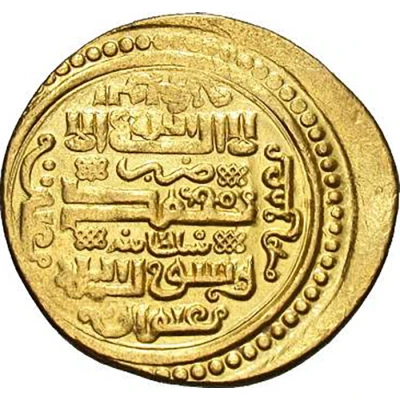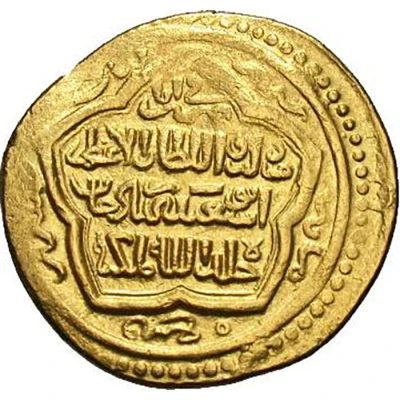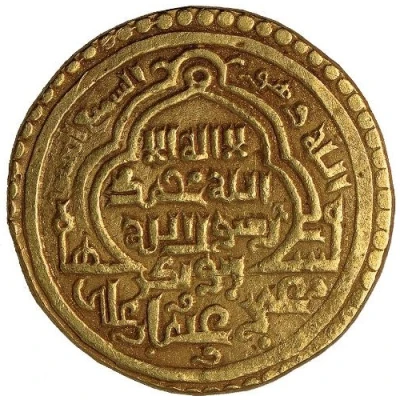


© Hlop71
Dinar - "Ilkhan" Abu Sa'id Khan
722 (1316-1335) years| Gold | 8.44 g | 24.6 mm |
| Issuer | Ilkhanate |
|---|---|
| Khan | Abu Sa'id Bahadur (1316-1335) |
| Type | Standard circulation coin |
| Year | 722 (1316-1335) |
| Calendar | Islamic (Hijri) |
| Value | 1 Dinar (2) |
| Currency | Dinar (1256-1388) |
| Composition | Gold |
| Weight | 8.44 g |
| Diameter | 24.6 mm |
| Thickness | 1.3 mm |
| Shape | Round (irregular) |
| Technique | Hammered |
| Demonetized | Yes |
| Updated | 2024-10-06 |
| Numista | N#151162 |
|---|---|
| Rarity index | 95% |
Interesting fact
One interesting fact about the "Ilkhan" Abu Sa'id Khan 722 (1316-1335) coin from Ilkhanate is that it features a unique blend of Islamic and Mongolian influences in its design. The coin's obverse side features a stylized representation of the Mongolian emblem, the "soyombo," which is a symbol of power and strength, while the reverse side features a traditional Islamic design with Arabic script and the name of the ruler, Abu Sa'id Khan. This blending of cultural influences reflects the rich history of the Ilkhanate Empire, which was a Mongolian khanate that ruled over a vast territory that included present-day Iran, Azerbaijan, and parts of Turkey and Iraq.



